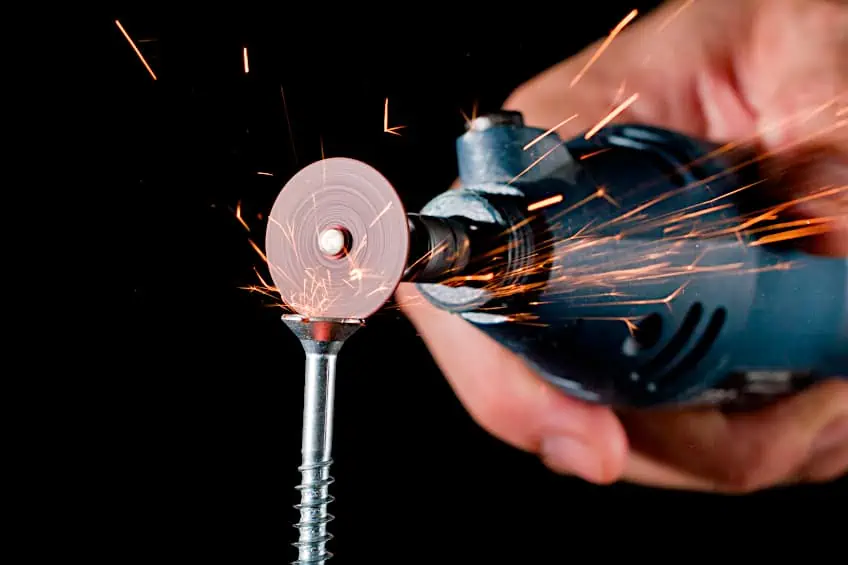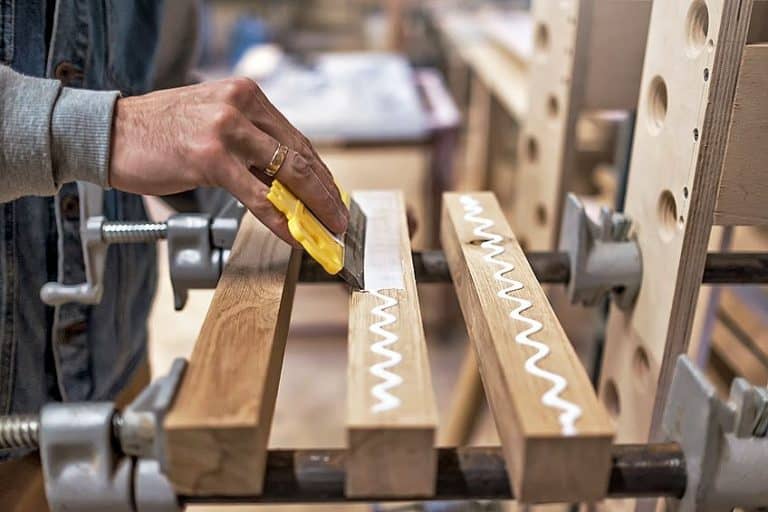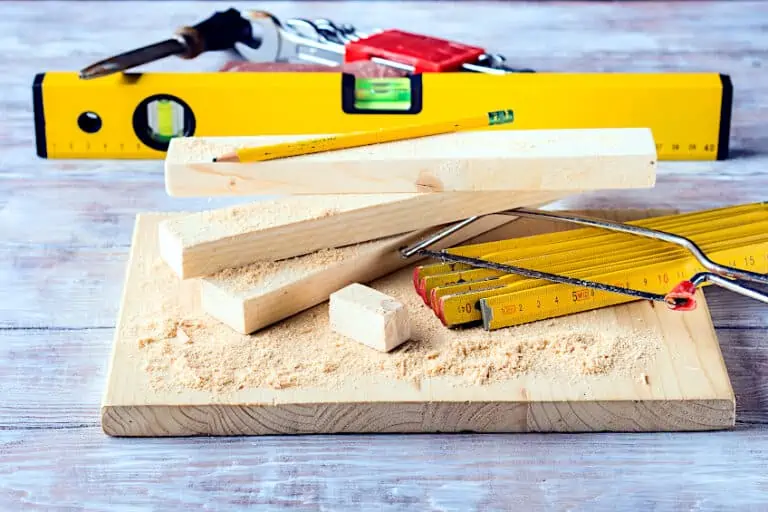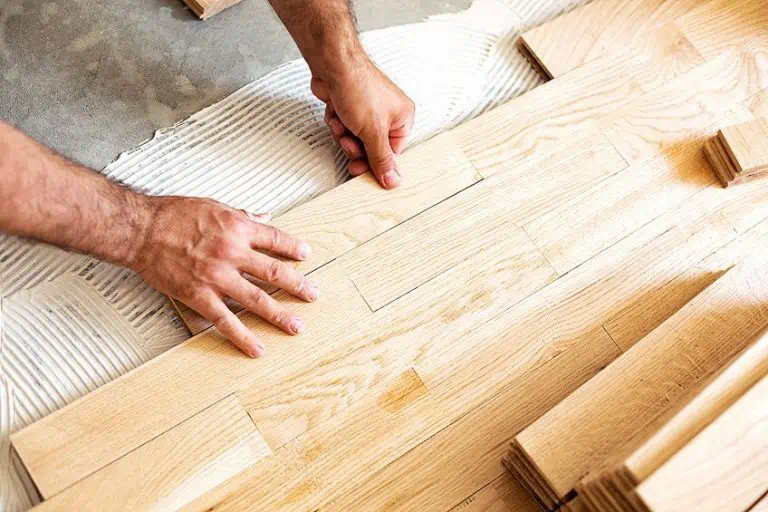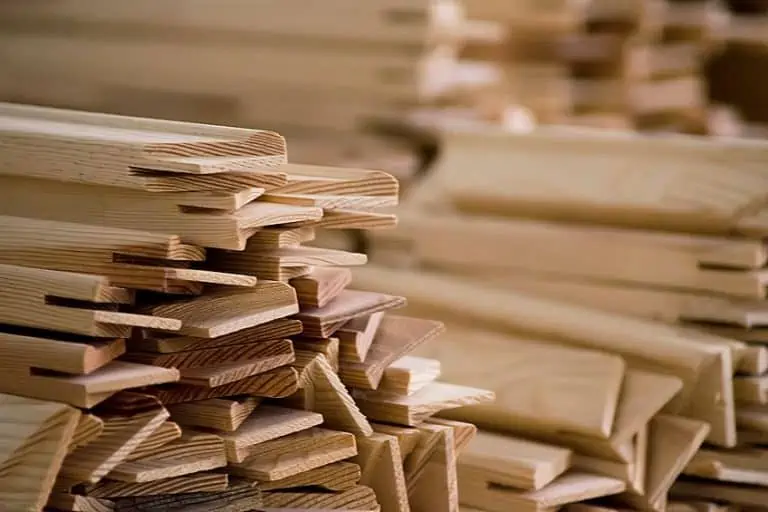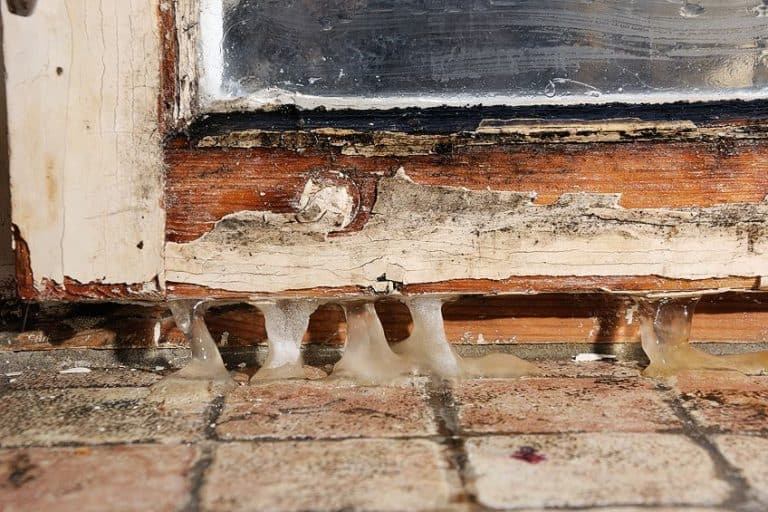How to Cut Screws – Easy Guide for Modifying Fasteners
Knowing how to cut screws will be an incredibly helpful skill to have when tackling more DIY tasks down the line. Sure, you could make a trip to the hardware store, but you will not always have the time for that and it could also break your repair rhythm, which is incredibly inconvenient. Instead, you can learn how to cut a screw without tools or with them in the guide that we have provided below!
Step-by-Step Guide for Cutting Screws
We will provide you with a complete guide that will properly teach you how to cut screws. You should also understand that there are plenty of methods that can be used, which we will dive into later, but the steps that are listed below can be applied to each of the methods that we recommend that you use.
Step 1: Determine the Length of the Screw Needed
Before you get too excited and start snipping away at the screw, you will need to determine the amount of the screw that has to be removed. You can measure the thickness of the material into which you intend to insert the screw and then compare that measurement with the length of the screw.
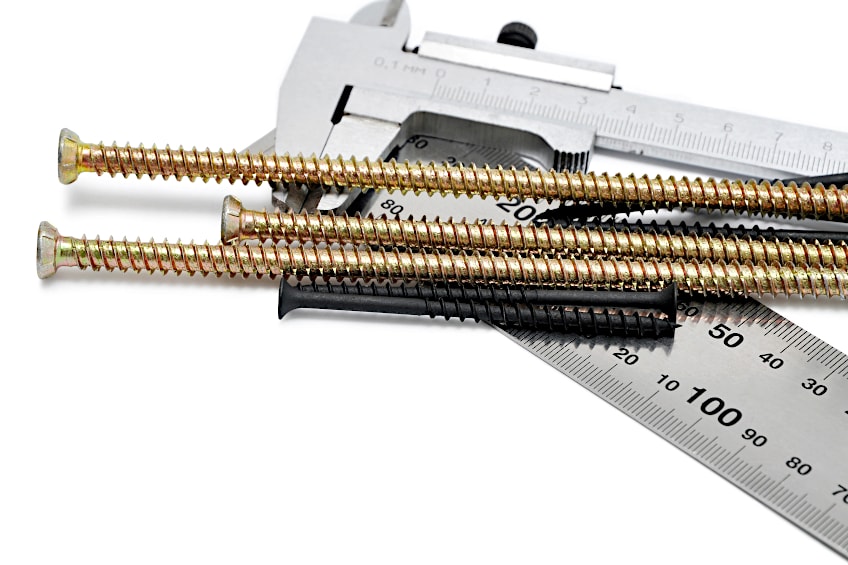
Alternatively, you can insert the screw to check if it extends beyond the surface. Use a drill bit that is a size smaller than the screw that you are planning to use. Then drill a pilot hole until you reach the exact spot where you plan to place the screw. Now, you could also use a drill bit that is a size larger than the screw for a flush fit. However, you will need to ensure that you only drill a ⅛ inch into the surface.
Step 2: Mark the Screw Where It Needs to Be Cut
Once the screw has been fully threaded into the pilot hole, you can mark where the screw needs to be cut. However, it is important that the screw is all the way into the surface as you will need to ensure that you get a perfectly accurate measurement. To get the best measurement, ensure that the screw has been firmly bolted into place with the head of the screw being either slightly below or level to the surface of your project.
Since the screw should be poking out on the other side of the wood, you will need to mark the point where it will need to be cut. It is okay if you have a bit of material left over, as this can be removed at a later stage.
Step 3: Secure the Screw in a Vise or Clamp
Once you are ready to cut the screw, you should start by locking it in place with a clamp or vise. In some cases, you will be able to use a nut to bolt it in place to ensure that it does not move when you begin cutting. One of the reasons for securing the screw in place is to prevent it from moving around when you start cutting. This could also prevent injuries if you are using a saw as you could easily cut yourself when doing this.
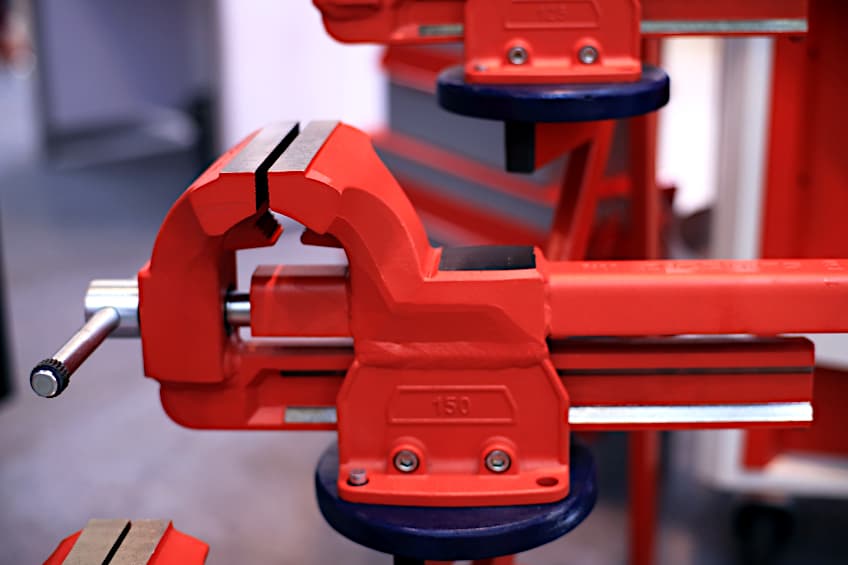
Step 4: Cut the Screw Using a Rotary Tool, Hacksaw, or Bolt Cutter
There is no specific tool to cut screws, but some of them will work much better than others. Bolt cutters are tools used for cutting bolts, screws, and other metal hardware. Since these fittings are frequently large in diameter, bolt cutters exist in a range of sizes with long arms and lever mechanisms. This allows for heavy-duty cutting with minimum operator exertion, and bolt cutter blades are often hardened to increase longevity.
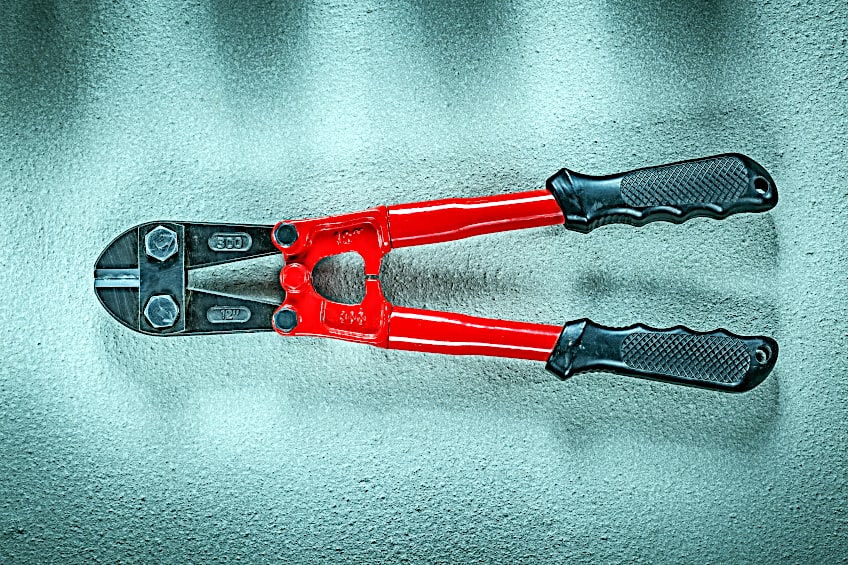
A hacksaw is a versatile metal-cutting saw that is often described by the length of its blade. They can range from 6-inch small hacksaws to 24-inch robust tools. The sprung steel of the framework supplies all of the tension required to retain the blade on tiny hacksaws, but a tensioning knob or lever is employed in bigger ones.
Whenever cutting screws, bolts, or nails, the thin blade allows you to reach into tight spaces. Smaller hacksaws are inexpensive and useful additions to any DIYer’s toolkit. While this will prevent you from needing to learn how to cut screws with pliers, hacksaws require a lot of effort to cut through most objects.
A rotary tool, or Dremel tool, is an excellent tool for cutting tiny metal items such as screws. If the screw is in a difficult location, you can even acquire a slanted shaft for cutting using a Dremel.
The tool that you use ultimately depends on what you have and what you are comfortable with using. Once you have chosen a tool to cut screws and cut them, you can move on to the next step.
Step 5: Smooth Out Any Rough Edges with Sandpaper or a File
It is very difficult to learn how to cut screws flush if you do not have the equipment needed. However, this does not mean that you will need to settle for rough edges. Instead, you can use a file or sandpaper to smooth down the rough edges for that sought-after flush finish. Additionally, it is recommended to cut the screw again if you are able to as some of the screw-cutting tools can be difficult to line up with the surface.
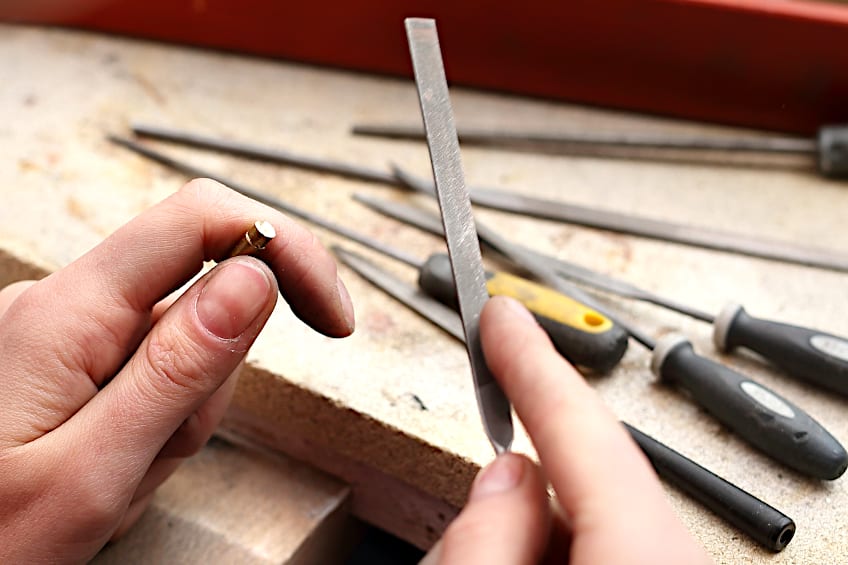
If the rest of the screw tip appears to be parallel with the surface but still a touch rough, smooth it off using a sander and coarse sandpaper. Sandpaper with a grit of 40 to 50 should suffice.
Keep in mind that some screws will still have sharp edges that can badly damage a sander, so be mindful of the amount of pressure that you are using.
Step 6: Test the Screw to Ensure It Fits Properly
Now that you have the screw in place, you will need to ensure that it fits properly. This can easily be done by using a screwdriver to gradually turn the screw, being careful not to turn it too much.
If the screw has a snug fit, then everything should be fine.
Tips for Cutting Screws
When it comes to learning how to cut screws, there are a few tips that you can use to ensure that you get the best results. This ranges from different tools that can be used and we have provided all of the information about the tools that can be used and more.
Use a Rotary Tool for Precision Cutting
If you need to be extremely exact while cutting a screw or other metal workpiece, rotary tools are the finest solution. Their thin blades, paired with their strong motors, allow you to precisely cut through metal sheets, fasteners, automobile body panels, and a variety of other surfaces. This means if you want a neat, smooth cut with little treatment, we strongly recommend utilizing this tool.
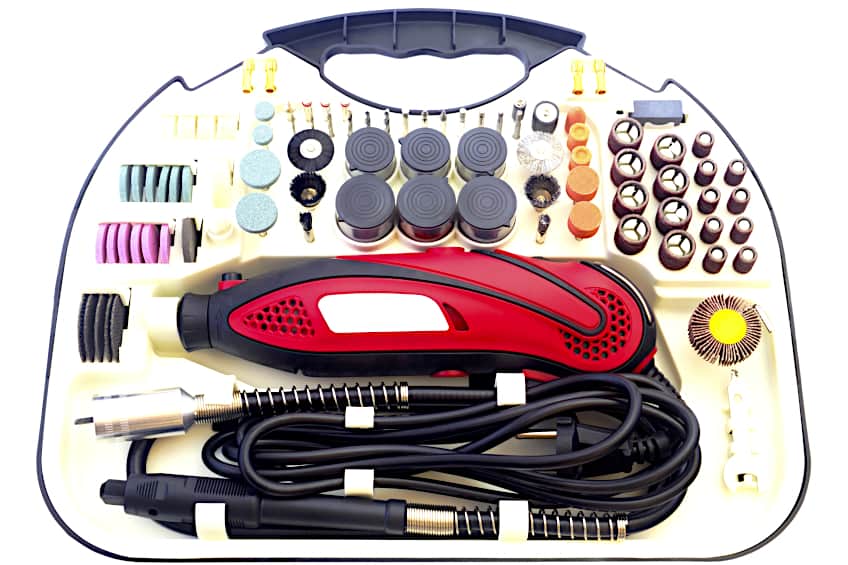
Choose the Right Cutting Tool for the Job
It is critical to select the proper instrument for screw cutting. Recognizing what metals your screws are made of is the most effective way to guarantee you get the proper tool for the job. Certain equipment simply will not be able to cut through coated steel screws that have been hardened, so do your study to prevent potentially harming your tools.
While we have already covered bolt cutters, Dremel multi-tools, along with hacksaws, you may also use a drill, pliers, wire cutters, as well as a cutting torch to cut screws.
Learning how to cut screws with a drill might sound complex, but it is not. The level of difficulty and effort required to cut a screw using any of these instruments can vary greatly, so be ready to apply some elbow grease while working with hand tools.
Wear Safety Goggles and Gloves to Protect Yourself
Safety should always be the key priority regardless of the type of project that you are working on. It is always a great idea to ensure that you protect your eyes from any stray metal shards from not hitting your eyes. Gloves will also prevent you from nicking your fingers or the rest of your hands on sharp screws, particularly those that have yet to be sanded.

Avoid Cutting Too Close to the Threads
When learning how to cut screws with pliers or any other tool, it is important to understand that you should never cut too close to the thread. If you do, this could lead to damage to the screw and you should always do your best to cut between the threads.
The goal should be to have a shorter screw with the threads intact.
Use a Deburring Tool to Remove Any Sharp Edges
Deburring tools are portable instruments used for eliminating burrs from a product’s raw edges and holes, and they can easily be used on screws. This method produces a smooth surface from a rough cut, allowing the object to properly perform its original purpose.
Keep in mind that there are different types of deburring tools that can be used but we recommend using a diamond file or a ceramic knife.
Cutting Different Types of Screws
Cutting screws to the required length tends to be easier than going to a supply store. Machine screws and wood screws may be cut using common equipment; however, because machine screws must go into threaded holes or nuts, it is critical not to damage the threads or they will not screw in.
Drywall and Wood Screws
Since you do not need to worry about harming the threads, wood screws are simpler to cut compared to machine screws. In most circumstances, a set of wire cutters or heavy-duty pliers, such as diagonal pliers, linesman’s pliers, or flush-cutting pliers, would suffice. Simply snip the screw’s end to the appropriate length.
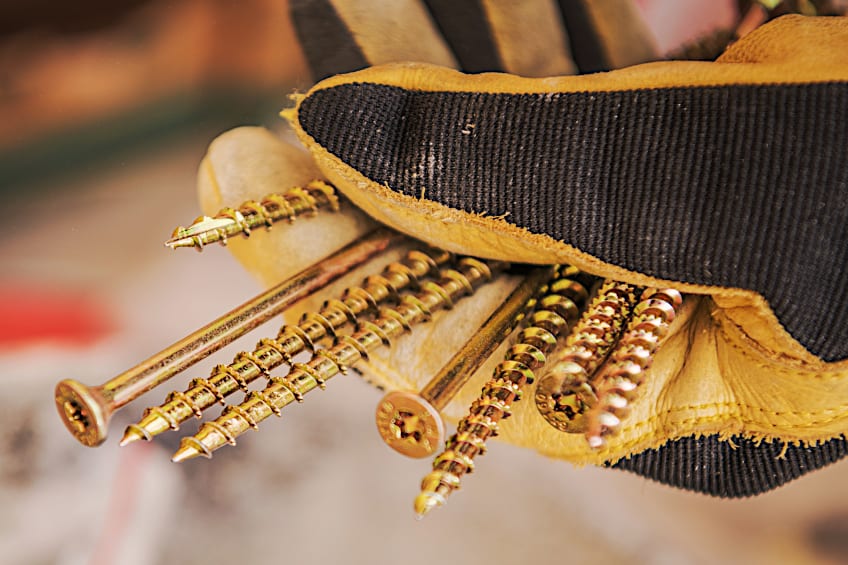
Machine Screws
To cut a machine screw using multifunctional wire strippers, completely expand the tool’s jaws up until the screw-cutter holes form full circles. Start threading the screw into the proper hole on the tool’s front side. If required, use a screwdriver.
Turn the screw in the required amount; it will cut at the spot where the two jaw halves of the wire stripping tool meet.
Squeeze the grips to cut off the screw, then remove it from the hole. The tool cuts cleanly without causing thread damage. This would also be the best way to learn how to cut screws flush.
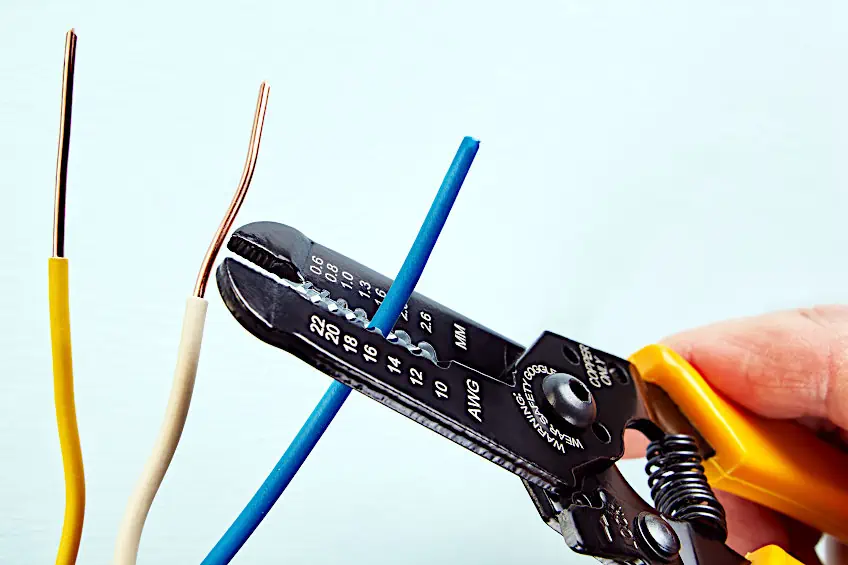
Large Machine Screws
Cutting machine screws bigger than an M5, which are not suitable for wire strippers, are best accomplished using a hacksaw, reciprocating saw, or jigsaw fitted with a metal-cutting blade. Power saws cut quicker and with less effort, while hacksaws are often simpler to manage. Jigsaws require a level or straight platform to rest on throughout the cut, whereas reciprocating saws tend to hop around.
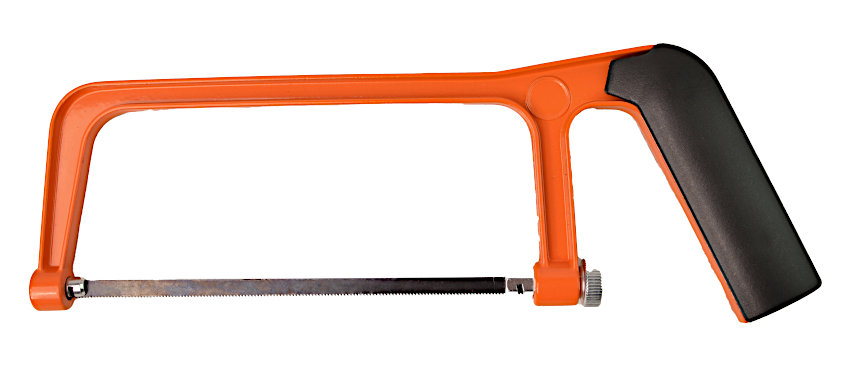
Now that you understand the nature of cutting screws and that it is not just an easy way of being lazy, you should have no issues with getting screws to the perfect length. With these methods, you can get screws that are the ideal length, which is the best-case scenario when working on your respective project. Keep in mind that different screws need to be cut in different ways and will require different tools. Lastly, remember to take safety precautions, as it is easy to cut yourself or have a fragment hit you in the eye. We wish you the best of luck with your screw cutting and your current project.
Frequently Asked Questions
Is It Easy to Learn How to Cut a Screw Without Tools?
Even if you have the grip strength of an orangutan, there is no way that you will be able to produce the necessary force that will be able to cut a screw. At best, you will need a hammer and a chisel, but this could also result in damaged threads and blunted chisel, which is the last thing that you would need. You could also learn how to cut screws with a drill if you do not have the necessary cutting tools.
Is It Easy to Learn How to Cut Screws?
Learning how to cut screws is neither extremely challenging nor particularly easy. You main focus should be to avoid damaging the threads. Some tools, such as a hacksaw, require more effort to use, but you can easily miss the threads. However, other tools, such as a jigsaw, can easily cut through a screw, but it can be difficult to do so with precision.
What Is the Best Method to Cut Screws?
In our experience, using a wire-stripper tool is one of the best methods of cutting screws. These have up to five holes that can be used for cutting screws of different sizes.

I have been into woodworking since 2005 and woodturning since 2011. Because of my love for wood and woodworking, I started woodhappen.com to teach other enthusiasts about how to finish and seal wood, the best woodworking tools, the different types of wood, and everything else related to woodworking! Read more about me here.

